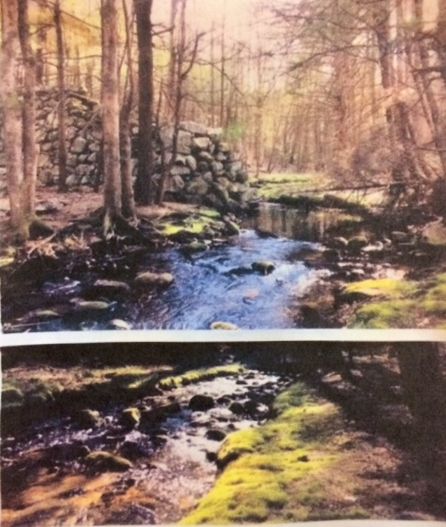Many inexperienced painters believe that to produce a good painting, all they need is mastery of technique. However, it takes more than finely executed techniques to achieve an artistic result. Artists need to observe closely what they intend to paint. When you’re an artist, seeing isn’t simple.
Most of the time, we look at things with only part of our attention. We see only what we expect to see. We assign a label to every image. For instance, if what we are looking at is a “tree,” we may not look closely at what is really there. This habit of not paying close attention keeps us from actually looking at things. In the everyday world, we quickly categorize and move on.
However, to paint or draw successfully, artists need to slow down so they can examine and study the shapes and values that make up an observed object. Artists try to avoid labeling an object as “tree” or anything else and instead train themselves to interpret what they see in a new way. Seeing means focusing attention, looking at shapes, values, and colors before beginning to paint. Where is the light hitting the tree branches? Can you see through the branches? What is the overall shape of the tree? Are branches straight, upturned, crooked, rough? Is the tree lopsided or symmetrical? Are the highlights a different color from the shadows? What is the weather, and how does it affect the appearance of the “tree”? By asking such questions and looking carefully, you can accurately paint what you see, NOT what you think you see.
Drawing helps you see, and seeing helps you draw. Drawing trains the mind, hand, and eye to work together. Many beginning artists avoid drawing altogether if they can, feeling that their drawing skills are not good. However, you should not feel obliged to render precise drawings of what you wish to paint! Do not let your concerns about drawing technique prevent you from trying to draw what is before you! One of the main purposes of drawing is to train yourself to see shapes and spaces more accurately – to “see” like an artist and take note of details. By keeping your drawing SIMPLE, just getting something down relatively quickly, you can allow yourself to see. Look for basic shapes, and notice how they are connected. Find larger shapes first; then fit smaller shapes into them. More specifically, see the image as a whole; then concentrate on individual components. Distracting details are only decoration on the surface of these shapes. Concentrate; work slowly and intently. Give yourself the time to observe and take in information before rushing to produce an image. Ultimately, you should be able to perceive everything you see as totally abstract forms, values, lines, and color, as in a jigsaw puzzle. Remember that shadows are shapes! Reflections are shapes as well. Backgrounds have shape and should act as frames for the subject of a painting. Only when you can “see” in this way will you begin to be able to suggest three-dimensional reality on your flat, two-dimensional paper.
Frederick Franck, artist and philosopher, says in The Zen of Seeing/Drawing: “I have learned that what I have not drawn I have never really seen, and that when I start drawing an ordinary thing I realize how extraordinary it is, sheer miracle . . . .” So do not hesitate to sketch and draw what you intend to paint. As you draw, you will notice important details and sharpen the mind/hand/eye coordination necessary to improve your painting skills. Drawing is not something you can or cannot do; it is a skill that requires practice and time, just like any other ability (including painting). The skills and mental processes necessary for drawing are the same as those used when painting with a brush.
Another benefit of drawing and sketching, in addition to developing necessary observational skills, is that you will learn to condense observed information into a simplified format, and this ability will come through in your painting. With a drawing you are more likely to end up with your focal point being prominent, because you concentrate mainly on that particular feature. Your drawing will be simplified, easier on the eye of the viewer, as you collect only the information that counts and leave out extraneous material.
Reference photos:

Line drawing:

Strive to “see” the world in terms of shape, pattern, color, line, and texture. Having observed carefully, use the information to record an image skillfully. Mastering these techniques will improve the quality of your work. Your personal viewpoint or individual perception of the world will become apparent as you interpret what you “see” and choose what to record and include in your drawing or painting.
Your picture has your touch in it. You can pick a subject that appeals or has special meaning to you. You can rearrange what you’re looking at any way you like. You can simplify or exaggerate parts of what you see. Look beyond the normal, the everyday, the expected for your painting subjects. Notice the negative shapes, the rhythms, the reflected lights, the colors. Look at an object close up for a new viewpoint. Consider a portrait approach or botanical style. Look for varied shapes and unusual forms to add interest to your picture. Each person sees the world in a different way.
Yay. I got this, which is AWESOME. Great blog.❤️❤️👍
LikeLike